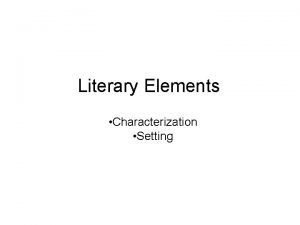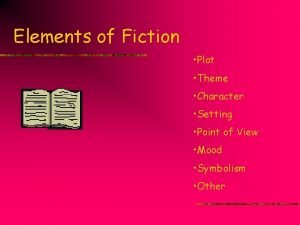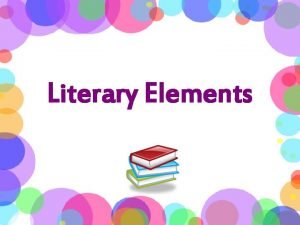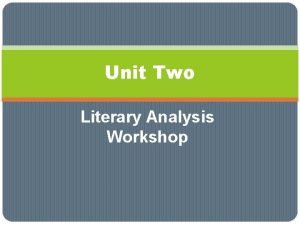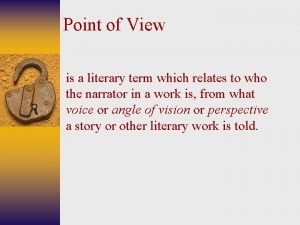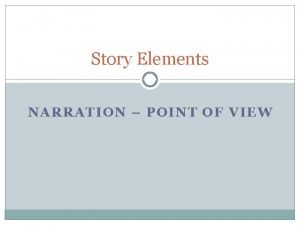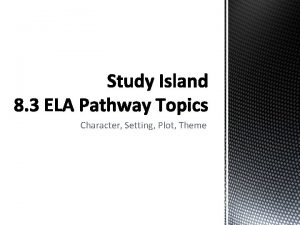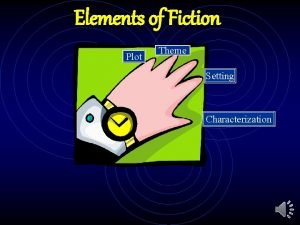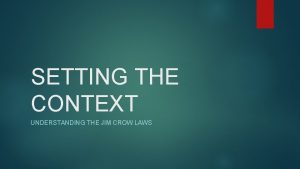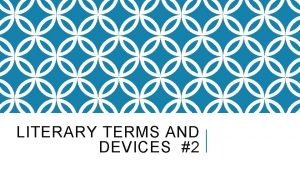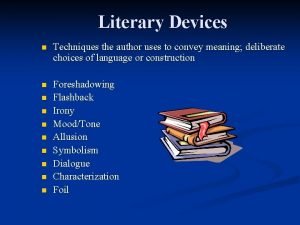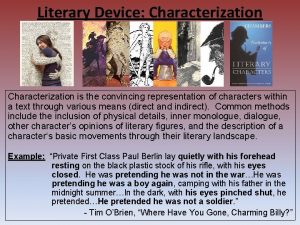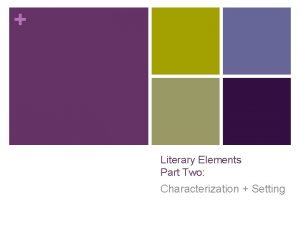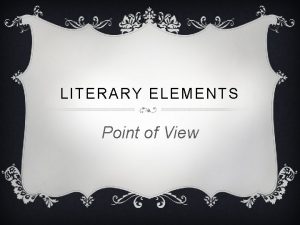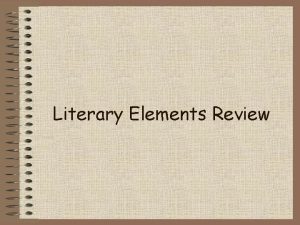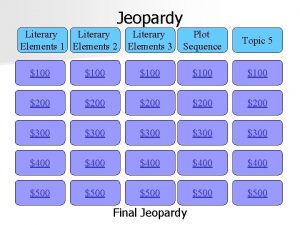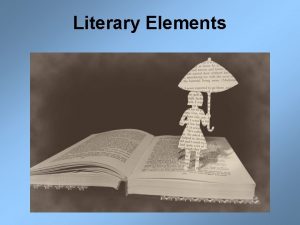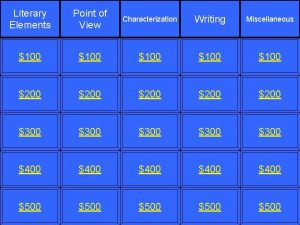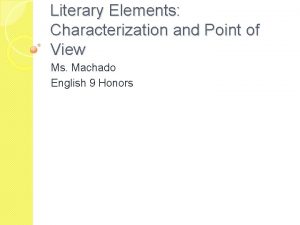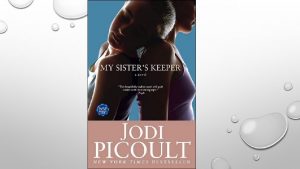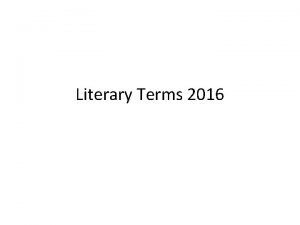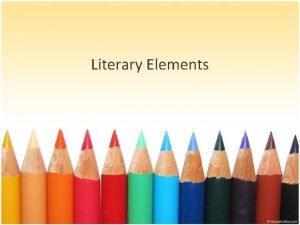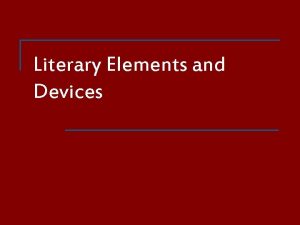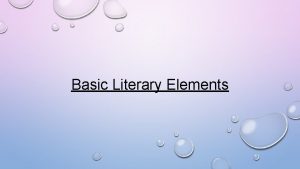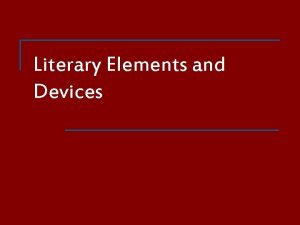Literary Elements Characterization Point of View Setting Characterization


















- Slides: 18

Literary Elements Characterization Point of View Setting

Characterization □ Character Analysis is the same thing you do every day as you try to understand the people around you. □ Look at the following picture and describe what you actually see.

This busy woman is tired.

Direct Characterization □ Author directly tells about the character □ Physical Appearance □ Nature/Personality □ Now look at the picture again and describe what you think is true about the person.

This busy woman is tired.

Indirect Characterization □ You have to figure out details about the character by examining their words, actions, and what other characters say and think. □ This is called inference—drawing conclusions. It’s similar to looking at the picture of the woman and deciding what you “think” is true.

Antagonist and Protagonist □ Protagonist = the main character or hero of the story □ Antagonist = the person or thing working against the protagonist

Point of View □ Point of View = who tells the story and how it is told □ Narrator = the person telling the story

First Person □ A character in the story tells the story □ “I” □ Everything is seen as that character sees it—not necessarily objective

Third Person Omniscient □ A person outside of the story tells the story and knows everything— even thoughts □ Can be several places at once □ Knows past and present

Third Person Limited □ A person outside of the story tells the story but is limited in what is known □ Usually follows one character

Setting □ Time and Place in which the action of the story takes place □ Local Color = the use of specific details that are common to a certain area of the country

Mood □ The feeling a piece of literature arouses in the reader □ What kind of mood is set by the following settings?





 Literary element characterization
Literary element characterization Literary elements characterization
Literary elements characterization Character plot setting theme
Character plot setting theme Loterary elements
Loterary elements Literary analysis point of view
Literary analysis point of view Point of view literary definition
Point of view literary definition Narrator examples
Narrator examples Poetic techniques
Poetic techniques Firstperson point of view
Firstperson point of view The lion and the mouse falling action
The lion and the mouse falling action Exposition of a story
Exposition of a story What is direct characterzation
What is direct characterzation Indirect characterization
Indirect characterization Theme setting plot
Theme setting plot Understanding jim crow (setting the setting)
Understanding jim crow (setting the setting) Indirect characterization definition
Indirect characterization definition Literary choices
Literary choices Literary devices in fiction
Literary devices in fiction Literary device characterization
Literary device characterization
